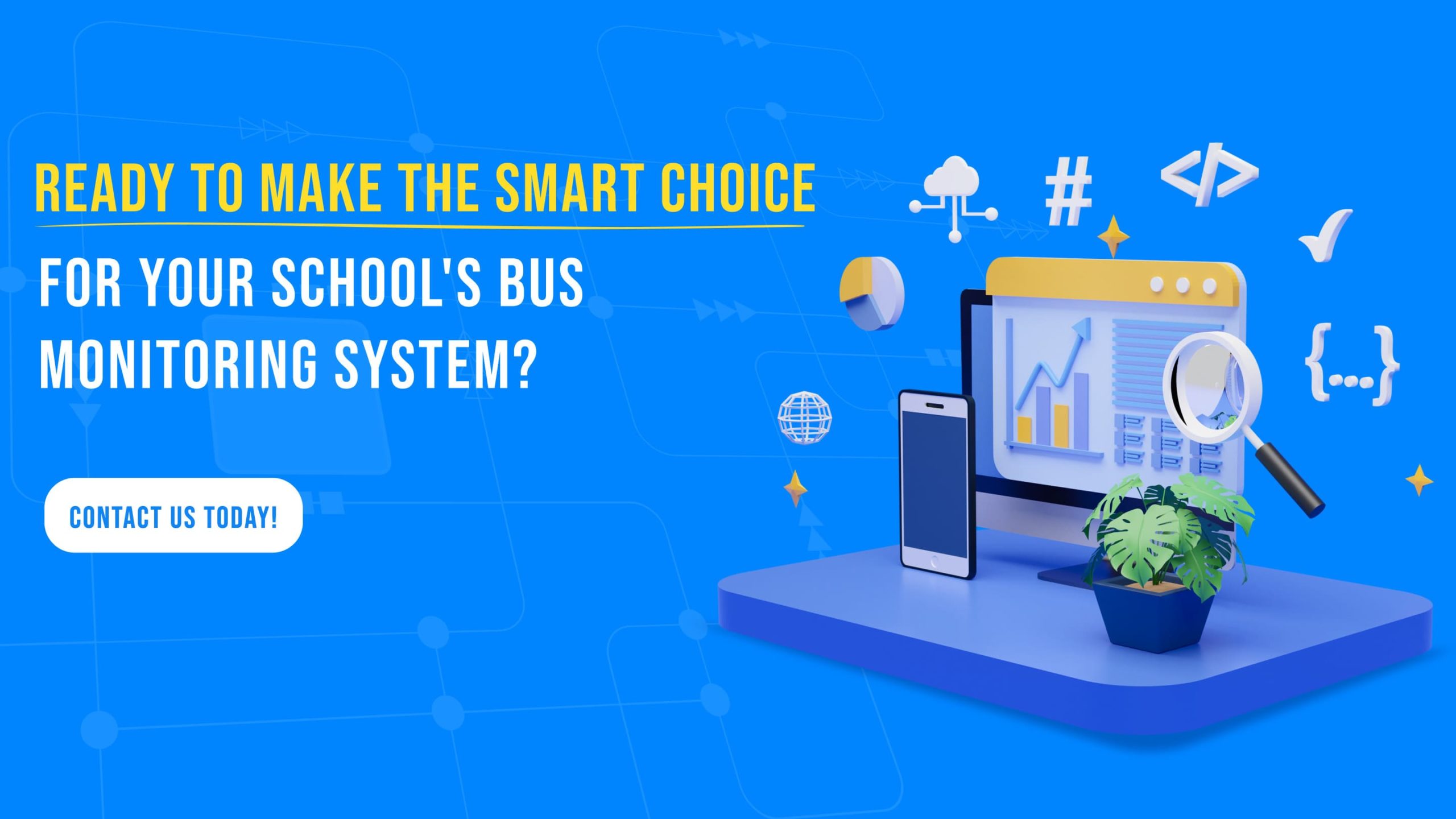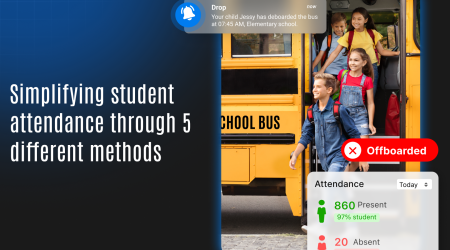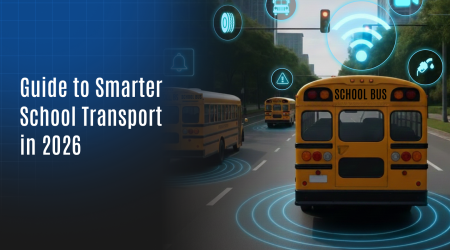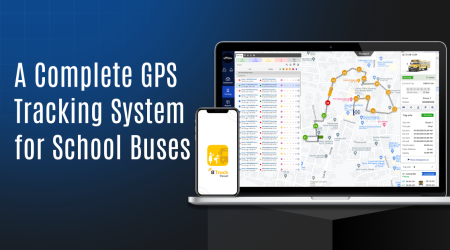How to Choose the Right School Bus Monitoring System
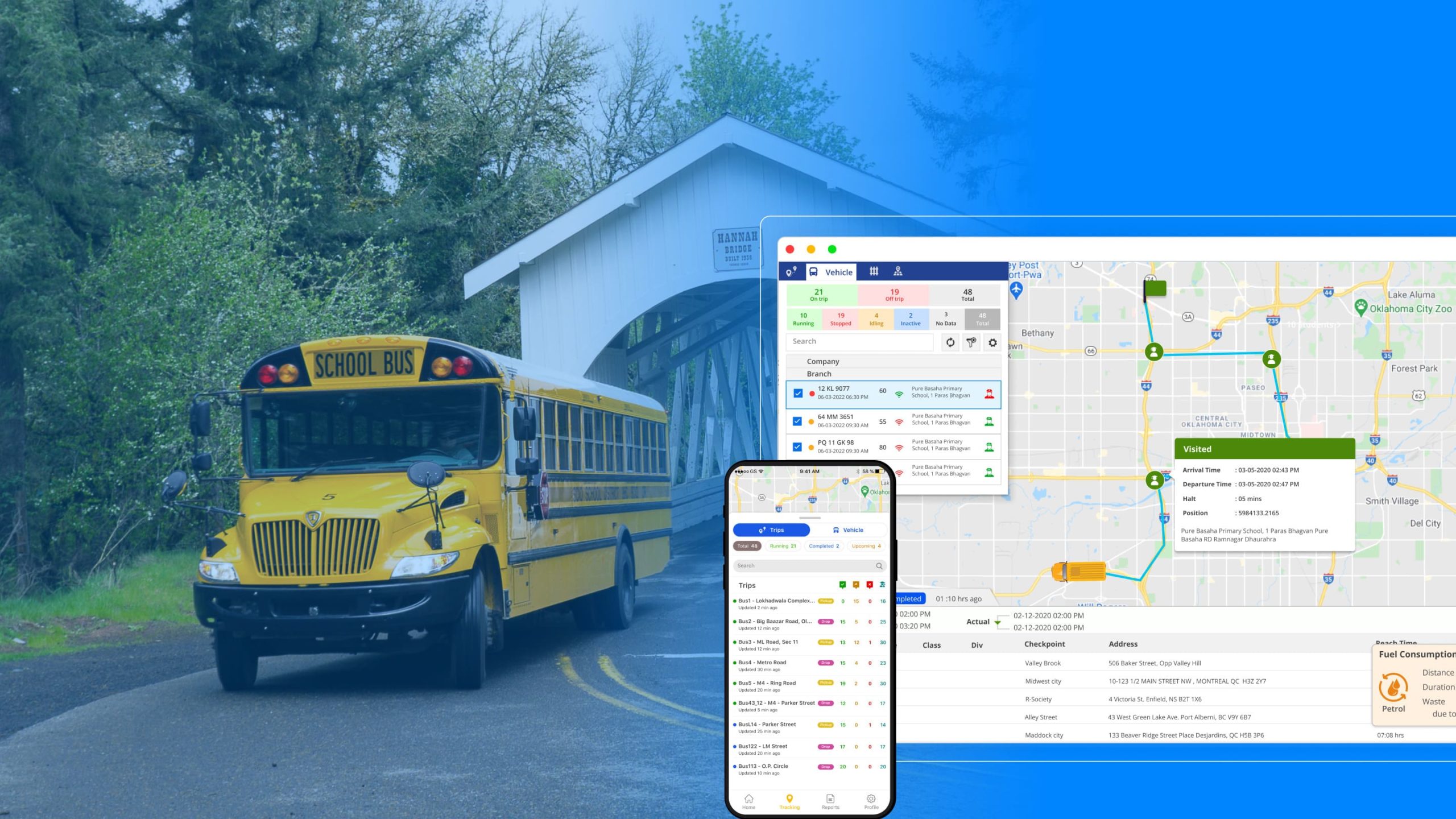
Choosing bus monitoring system can be a daunting task, but it is essential to choose the right system for ensuring the safety and efficiency of school transportation. This guide will help you navigate the process with ease, offering clear steps and important considerations to make the best choice.
Define Your Requirements
Before diving into the features and costs for choosing bus monitoring system, it’s important to define your specific needs. Consider the following:
- Number of Buses: How many buses does the school operate? This affects the scalability requirements of the monitoring system. Systems must be able to handle the current number of buses and allow for future growth as the fleet expands. Consider the potential need for additional tracking units and the system’s ability to manage multiple vehicles simultaneously.
- Geographic Coverage: What areas do the buses cover? Systems must be capable of providing reliable coverage across all necessary routes. Some areas might have weak signal strengths or other geographical challenges, so it’s crucial to ensure that the monitoring system can maintain accurate tracking in both urban and rural settings.
- Safety Concerns: Are there specific safety issues, such as high traffic areas or long rural routes, that need to be addressed? Consider areas with heavy traffic where monitoring speed and route adherence is critical, or rural routes where emergency response times might be longer. Tailoring the system to address these unique safety challenges is essential.
By understanding these requirements, you can better evaluate which system will be the best fit.
Importance of a School Bus Monitoring System
School bus monitoring systems are crucial for ensuring the safety of children, providing real-time updates, and keeping school staff and parents informed. These systems offer more than just location tracking—they enhance safety and simplify the management of school transportation.
- Ensuring Safety: The primary function of a school bus monitoring system is to keep students safe during their commute. By tracking the bus in real-time, the system ensures that children are on the correct route and that any deviations or emergencies are quickly identified and addressed.
- Real-Time Updates: These systems provide live updates on the bus’s location and status, allowing parents and school administrators to stay informed. This reduces anxiety and ensures that any issues can be swiftly managed.
- Improving Efficiency: School bus monitoring systems streamline operations by providing detailed reports on routes, driver behavior, and bus performance. This information can be utilized to streamline routes, minimize fuel usage, and enhance overall efficiency.
⟶ Top 8 School Bus Routing Software To Manage Your Routes.
Key Features to Look For While Choosing Bus Monitoring System
Safety Features
Safety is the top priority. Look for these key safety features:
- Real-Time Tracking: This allows you to see the exact location of the bus at any time, ensuring that children are on the right route and schedule. Real-time tracking provides an up-to-date view of the bus’s location, which is crucial for maintaining route adherence and responding to any deviations promptly.
- Geofencing: Set up virtual boundaries and receive alerts when a bus enters or exits these areas. This helps in managing route adherence and detecting unauthorized trips. Geofencing can be used to create safe zones around schools, homes, and other important locations, providing additional layers of safety and control.
- Emergency Alerts: Immediate notifications in case of emergencies, such as accidents or breakdowns, enable quick response and resolution. Emergency alerts can include automated messages to parents and administrators, ensuring that everyone is informed and can take appropriate action.
- Speed Monitoring: Keep track of the bus’s speed to ensure it is being driven safely and within legal limits. Speed monitoring helps in enforcing safe driving practices and can reduce the risk of accidents caused by speeding. It also allows for the identification of areas where drivers may need additional training or support.
User-Friendly Design
A good system should be easy to use for everyone, from school staff to parents. Look for:
- Simple Dashboard: All important information is displayed clearly in one place, making it easy to monitor and manage. A user-friendly dashboard provides an intuitive interface that allows users to access real-time data, generate reports, and manage settings without requiring extensive training.
- Mobile Access: Allows parents and school staff to check on the bus from their smartphones, ensuring they are always informed. Mobile access means that updates and alerts are accessible on the go, providing convenience and peace of mind for parents and school administrators alike.
- Custom Reports: Generate reports on daily routes, driver performance, and more, helping in administrative tasks and decision-making. Customizable reports allow users to focus on specific metrics and trends, aiding in the identification of areas for improvement and the implementation of targeted solutions.
Compatibility
Ensure the system works well with existing hardware and software. Look for:
- GPS Device Compatibility: The system should connect seamlessly with various GPS devices. Compatibility with different GPS units ensures flexibility in choosing the best hardware for the school’s needs and allows for easy upgrades in the future.
- Integration with School Systems: It should easily link with the school’s existing databases, ensuring smooth data flow and management. Integration with student information systems, transportation management software, and other school databases streamlines operations and reduces the need for manual data entry.
Data Security
Protecting student data is crucial. Look for:
- Data Protection: The system should use strong encryption to prevent unauthorized access. Robust data protection measures ensure that sensitive information, such as student locations and personal details, are kept secure from potential breaches.
- Controlled Access: Only authorized personnel should be able to access sensitive data. Implementing access controls and permissions ensures that only those with the necessary clearance can view or modify data, enhancing security.
- Regulatory Compliance: Ensure the system adheres to legal standards for data protection, such as GDPR or local regulations. Compliance with data protection laws not only ensures the security of student information but also protects the school from potential legal issues and fines.
Scalability
Select a system that can scale with your requirements. Take into account:
- Expandable Capacity: The ability to manage more buses as the fleet grows. A scalable system allows schools to add new buses and routes without needing to replace or extensively upgrade the monitoring system.
- Support for More Users: It should accommodate additional parents, school staff, and administrators. As the school community grows, the system should be able to handle increased user numbers without performance issues.
- Feature Upgrades: Ensure you can add new features as needed to adapt to changing requirements. The ability to upgrade and add features allows the system to evolve with the school’s needs, ensuring it remains effective and relevant over time.
Cost Considerations
While cost is important, it shouldn’t be the only factor. Consider:
- Setup Costs: Initial expenses for system installation, encompassing both hardware and software setup. Understanding the upfront costs helps in budgeting and planning for the implementation phase.
- Subscription Costs: Ongoing fees for using the software and accessing updates. Consider the long-term costs associated with subscription plans and ensure they align with the school’s budget and financial projections.
- Value for Money: Ensure the features and benefits justify the cost, providing a good return on investment. Evaluate the cost-effectiveness of the system by comparing its features, reliability, and overall performance with the price.
Choosing the Right Provider
Select a reliable provider by evaluating:
- Customer Feedback: Look at reviews from other users to see how well the system works and how satisfied they are. Customer reviews provide insights into the system’s performance, ease of use, and the provider’s customer service.
- Success Stories: Check out case studies to see how the system has helped other schools improve their transportation management. Case studies offer real-world examples of the system’s benefits and can help in making an informed decision.
- Industry Recognition: Consider providers that have won awards or received certifications, indicating a high level of trust and reliability. Recognition from industry bodies and certifications can be indicators of the provider’s commitment to quality and innovation.
Case Studies
Case Study 1
One school district saw a 25% decrease in late buses and a 30% increase in parent satisfaction after implementing a new monitoring system with real-time tracking and geofencing. Parents appreciated the real-time updates, and the school could quickly respond to any route deviations.
- Problem: Frequent late buses and low parent satisfaction.
- Solution: Implemented a monitoring system with real-time tracking and geofencing.
- Result: 25% decrease in late buses and 30% increase in parent satisfaction. Prompt responses to route deviations enhanced overall efficiency.
Case Study 2
Another school faced challenges with maintaining accurate records of bus routes and driver performance. After integrating a user-friendly monitoring system, they reported a significant improvement in route efficiency and driver accountability. Custom reports allowed the administration to identify and address issues promptly.
- Problem: Inaccurate records and poor driver performance.
- Solution: Integrated a user-friendly monitoring system with custom reporting.
- Result: Improved route efficiency and driver accountability. The administration could quickly address issues with the help of detailed reports.
Common Challenges and Solutions
High Initial Costs
Solution: Look for systems that offer flexible payment plans or leasing options. Some providers may also offer discounts for long-term commitments, making it easier to manage initial expenses.
- Flexible Payment Plans: Spread the cost over time to ease the financial burden.
- Leasing Options: Consider leasing the system instead of purchasing it outright.
- Discounts for Long-Term Commitments: Providers may offer reduced rates for long-term contracts, providing cost savings.
Integration with Existing Systems
Solution: Choose a monitoring system that is compatible with various GPS devices and can easily link with school management software. Providers often offer support to help with the integration process, ensuring a smooth transition.
- Compatibility with GPS Devices: Ensure the system works with the GPS units already in use.
- Integration Support: Providers should offer assistance with the integration process to minimize disruptions.
- Seamless Data Flow: The system should integrate smoothly with existing databases and management software.
Data Security Concerns
Solution: Ensure the system uses strong encryption and has strict access controls. Regularly update passwords and train staff on best practices for data security to maintain high levels of protection.
- Strong Encryption: Protect data from unauthorized access with advanced encryption.
- Strict Access Controls: Restrict data access exclusively to authorized personnel.
- Regular Updates and Training: Keep security measures up to date and train staff on data protection best practices.
User Adoption
Solution: Select a system with an intuitive interface and provide comprehensive training for staff and parents. Offering 24/7 customer support can also help address any issues quickly, ensuring everyone is comfortable using the system.
- Intuitive Interface: Ensure the system is easy to navigate and use.
- Comprehensive Training: Offer detailed training sessions for all users.
- 24/7 Customer Support: Offer round-the-clock support to address any issues promptly.
Conclusion
Choosing the right school bus monitoring system involves focusing on safety, ease of use, compatibility, data security, scalability, and cost. By considering these factors, you can make a smart choice that benefits schools and parents alike, ensuring safe and efficient school transportation. Your role in setting up these systems is crucial in making sure school transportation is safe and efficient.
With the right information and a clear plan, choosing bus monitoring system which is perfect fit as per your requirement, can be straightforward and highly rewarding. This guide provides a comprehensive overview to help you make an informed decision, ensuring that the chosen system meets all necessary requirements and delivers on its promises.
